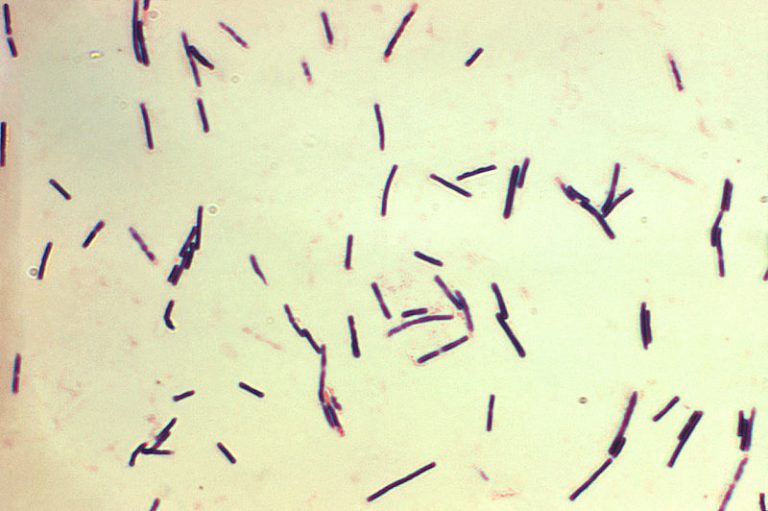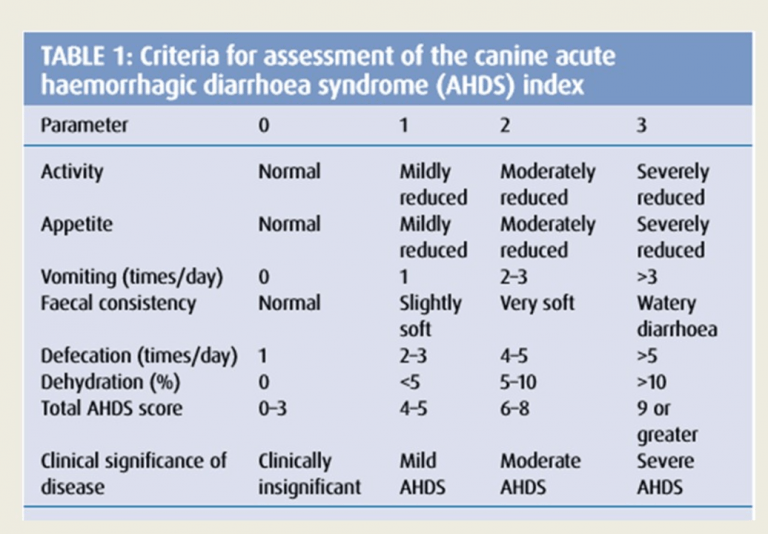No dog parent wants to clean up diarrhea. Cleaning up bloody diarrhea is even more unpleasant. Unfortunately, the development of acute bloody diarrhea is not an uncommon occurrence in our canine companions. Such a malady is called Acute Hemorrhagic Diarrhea Syndrome or AHDS. Formally called Hemorrhagic Gastroenteritis (HGE), this ailment can be debilitating and potentially lethal. So, this week I have dedicated time to shedding light on this common problem. Happy reading!
AHDS – What is it?
The simple fact of the matter is veterinarians don’t definitively know what causes some dogs to develop acute bloody diarrhea. Veterinary researchers and board-certified veterinary specialists have conducted much research to try to elucidate underlying triggers like allergic reactions, immune-mediated disease, dietary indiscretion and/or toxins, infections, and even hereditary disorders.

Recent research implicated the bacterium, Clostridium (C.) perfringens, in the development of AHDS. Increased proportions of C. perfringens have been found in the feces of dogs with this ailment. Board-certified veterinary specialists have evaluated biopsies and cultures of tissues from stomach and small intestines of affected dogs. These studies showed lesions were only found in the small intestines, not in the stomach. Additionally, Clostridium spp. were only detected attached to the lining of the small intestines (called the mucosa). Given these findings, the name of this condition was appropriately changed from hemorrhagic gastroenteritis (HGE) to acute hemorrhagic diarrhea syndrome. Subsequent studies in dogs with AHDS allowed classification of the Clostridium spp. as C. perfringens type A.
AHDS – What does it look like?
Patients with acute hemorrhagic diarrhea syndrome are commonly young to middle-aged. One study suggested dogs develop AHDS more often during the Winter season. Small and toy breed dogs are over-represented, particularly:
- Yorkshire terriers
- Miniature Pinschers
- Miniature schnauzers
The diarrhea is often quite watery, and the volume defecated may be more voluminous than normal. Others have an urgency to defecate, and strain while doing so. Many pet parents describe the feces as pure blood. Patients often have concurrent vomiting (sometimes with blood in it) and reduced appetites. They are quite lethargic, may have abdominal discomfort, and are frequently dehydrated because of fluid loss through diarrhea.

AHDS – How is it diagnosed?
Veterinarians will obtain a thorough patient history and perform a complete physical examination. As mentioned earlier, most patients are dehydrated, and many of them are uncomfortable when their abdomens are palpated. Rectal examination identifies diarrhea with obvious blood.
To date, there is no specific test to diagnose AHDS. Veterinarians will typically recommend evaluating some non-invasive blood and urine tests, including:
- Complete blood count (CBC): a non-invasive blood test that evaluates red blood cells, white blood cells, and platelets
- Serum biochemical profile (CHEM): a non-invasive blood test that assesses liver and kidney function, as well as electrolytes (i.e.: sodium, potassium), and certain gastrointestinal enzymes
- Urinalysis (UA): a non-invasive urine test that helps evaluate kidney function and screen for inflammation and infection in the lower urinary tract.
- Coagulation profile (PT/PTT): a non-invasive blood test to help determine if pets can properly clot their blood
These tests often document a marked elevation in a patient’s percentage of red blood cells (due to fluid loss) with concurrently low (or low-normal) major protein levels (i.e.: albumin) and concentrated urine (due to dehydration). A clinical diagnosis of AHDS often made based on the following criteria:
- Acute onset of watery hemorrhagic diarrhea
- Young to middle-aged dog
- Small or toy breed dog
- Elevated percentage of red blood cells
- Low blood protein levels
Veterinarians gauge the severity of patient’s AHDS using objective data. This information may be helpful to stratify patients and to formulate effective therapeutic plans.

AHDS – How is it treated?
Patients with acute hemorrhagic diarrhea syndrome unquestionably need intravenous fluids to correct dehydration and shock. The importance of ensuring vital organs receive oxygen through the provision of fluid therapy that allows red blood cells to flow properly is of tantamount importance. The infused fluids are often supplemented with supplements and vitamins to support normal organ function.
Other interventions that are often prescribed are:
- Analgesia – Most dogs with AHDS have abdominal discomfort, the proverbial tummy ache from hell. These pets need appropriate pain medications to allow them to rest comfortably and begin the healing process.
- Antibiotic therapy – The intestinal lining is disrupted in dogs with AHDS. As such, bacteria in the intestinal tract may enter the bloodstream. This is called bacterial translocation, and if this occurs, may lead to a systemic and potentially lethal infection called sepsis. For this reason, many veterinarians prescribe an antibiotic that targets intestinal bacteria, especially C. perfringens. The use of antibiotics in patients with AHDS is relatively controversial. Studies have shown the incidence of bacterial translocation in dogs with AHDS is low, and the use of antibiotics didn’t influence survival time.
- Nutrition – The best way to promote healing of the intestinal tract is to provide nutrients. Unfortunately, many AHDS patients don’t want to eat. Nevertheless, these dogs need food. As such, veterinarians may recommend the use of temporary, non-invasive feeding tubes to ensure sick pets receive the nutritional support they need.
- Anti-nausea medications – Dogs with AHDS are invariably nauseated and certainly many of them are concurrently vomiting. This nausea contributes to their lack of appetite. The use of anti-nausea medications hopefully allows pets to start re-eating sooner than they otherwise would with them.
Pet parents may find it helpful to partner and collaborate with board-certified veterinary internal medicine and emergency and critical care specialists who can provide around-the-clock care.
The take-away message about AHDS in dogs…
Acute hemorrhagic diarrhea syndrome is a relatively common cause of acute bloody diarrhea in dogs. Affected patients frequently vomit and are markedly dehydrated. Early and aggressive management to provide fluid support, nutrition, and pain relief are truly beneficial to help maximize the likelihood of a positive outcome from this potentially lethal health problem.
To find a board-certified veterinary emergency and critical care specialist, please visit the American College of Veterinary Emergency and Critical Care.
To find a board-certified veterinary internal medicine specialist, please visit the American College of Veterinary Internal Medicine.
Wishing you wet-nosed kisses,
cgb






